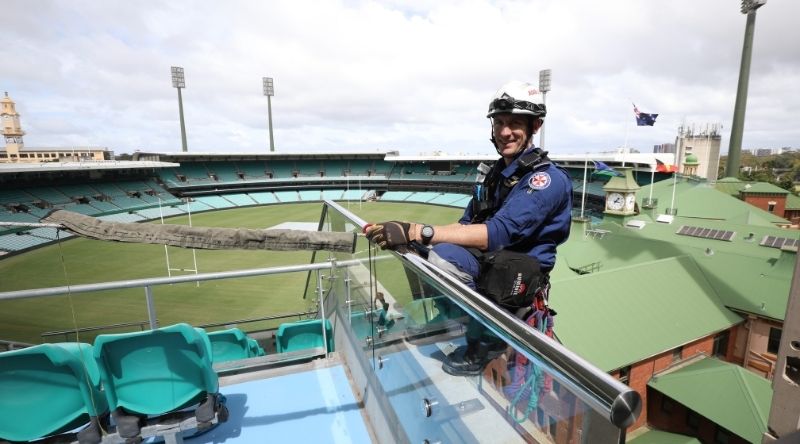
It's famous for its intense and memorable sporting moments, but now the Sydney Cricket Ground is playing a very different role.
Something that is quite literally a matter of life and death.
Last month, for the first time ever, 11 paramedics who are looking to become part of NSW Ambulance’s Special Operations Team (SOT) were tasked with abseiling down the 70m-high floodlights at the SCG.
The gruelling day-long task was a simulation of the type of scenario the SOT hopefuls will likely be faced with in real life.
Despite being a training exercise, SOT Inspector Andrew Mayer said the challenge was both crucial and essential in determining how the trainees handle themselves in high-pressure circumstances.
“They found it quite daunting,” Insp Mayer said.
“A lot of the jobs that we do are at a significant height, so we need to make sure they are able to cope with that sort of height.
“They could, for instance, go to The Gap (in Sydney’s eastern suburbs) for a rescue, and if they get a knot wrong or they don’t reeve a rope through the descending device correctly there could be catastrophic consequences for that SOT operator. It’s as simple as that.
“So if they can’t show us the way to do it after they’ve been taught in an assessment, then obviously we can’t allow them to continue (with the course). We set an extremely high standard and we never drop that standard.”
Just to be considered for the course, paramedics require four years’ experience as a P1 and must undergo several forms of assessment as well. Once accepted, applicants spend seven weeks taking part in rigorous challenges, while being assessed 60 times during the course. If they fail three tasks, they are disqualified from the course (hopefuls can reapply to do it at a later date).
The current group of trainees – which also includes an additional person from the Australian Defence Force – have carried out exercises which include using breathing apparatus in a smoke-filled room, being trapped in a confined space and navigating through dense bushland.
Four-wheel drive training across a diverse range of terrain and taking part in simulations with the NSW Police Tactical Operations Unit are among some of the other course requirements.
Paramedic Brett Eichorn is one of the trainees who hoped to successfully graduate from the course, which was set to conclude after this story went to publication. “It’s probably the most intense thing I’ve ever done,” he said.
“Going over the edge of the light tower at the SCG took my breath away… it was sensational.”
NSW Ambulance currently has about 200 SOT personnel across the state.
